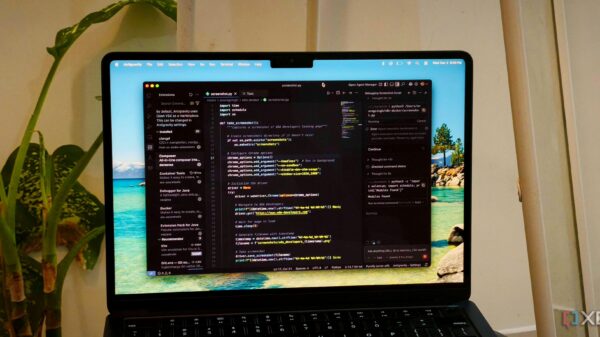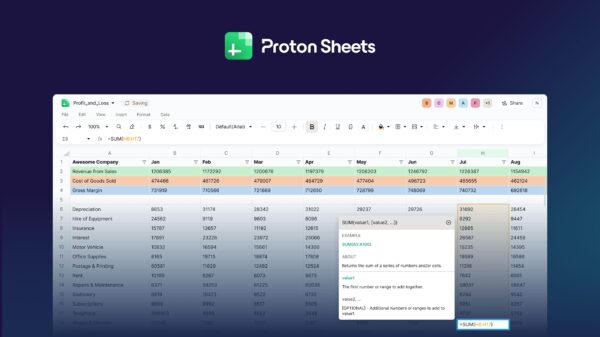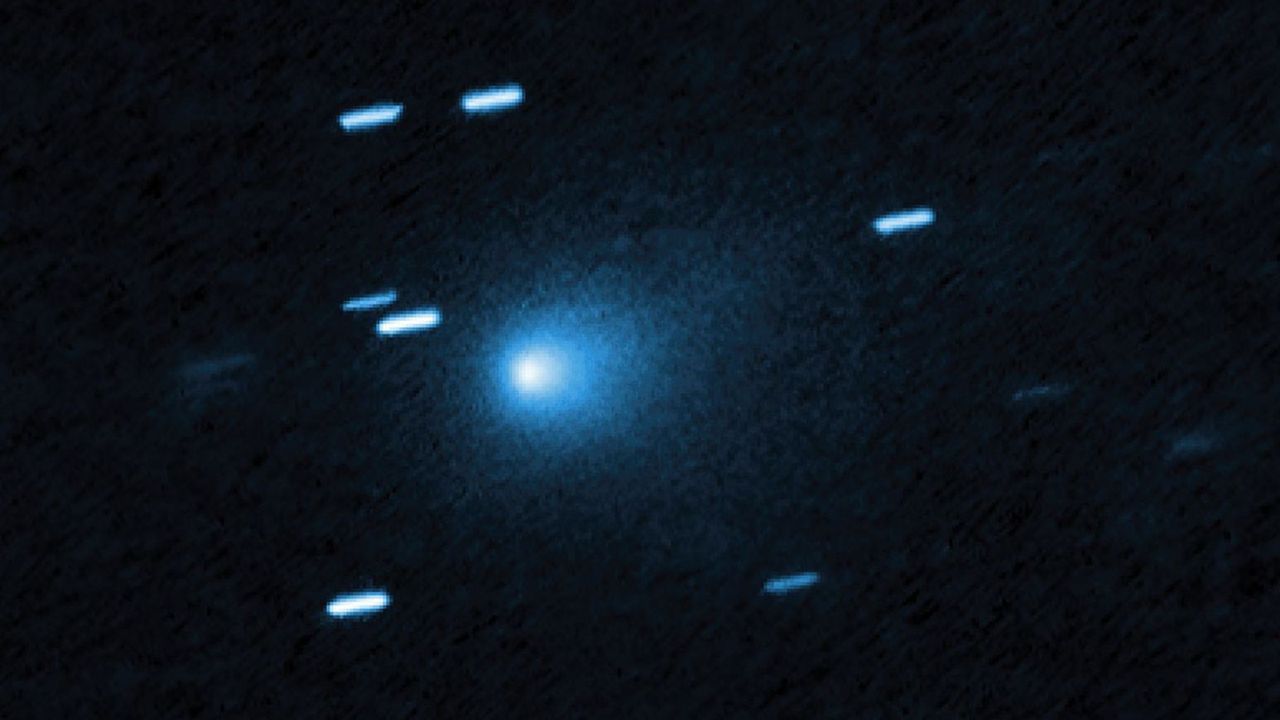The Hubble Space Telescope has provided the clearest images yet of the interstellar comet 3I/ATLAS, revealing its distinct characteristics as it races through our solar system. Discovered on July 1, 2025, by the Asteroid Terrestrial-impact Last Alert System (ATLAS), this comet is noted for its incredible speed, traveling at approximately 130,000 mph (209,000 kph). This remarkable velocity ensures that it will escape the sun’s gravitational pull, continuing its journey through space.
According to David Jewitt, the science lead on the Hubble observations from the University of California, Los Angeles, the comet’s origins remain a mystery. “No one knows where the comet came from,” Jewitt stated, likening the observation to glimpsing “a rifle bullet for a thousandth of a second.” As a result, astronomers have a unique opportunity to study this celestial body, believed to have originated from beyond our solar system.
Astronomers classify comets based on their four primary components: a solid nucleus, a coma, and two tails that develop when they approach the sun. The latest Hubble observations indicate that 3I/ATLAS possesses a coma filled with dust particles, with initial indications of a tail forming. The nucleus, hidden beneath this coma, is estimated to be between 1,000 feet (320 meters) and 3.5 miles (5.6 kilometers) in diameter, a significant range for cometary bodies.
Hubble’s imagery also captured a dust plume emanating from the warm side of the comet, contributing to the coma, alongside early signs of a dust tail. Remarkably, despite being an interstellar object, 3I/ATLAS is exhibiting behavior typical of comets found within our solar system. It is currently about 3.8 astronomical units from the sun, demonstrating characteristics that align with native comets as it approaches perihelion on October 29.
While 3I/ATLAS poses no threat to Earth, it will come as close as 1.8 astronomical units (167 million miles or 270 million kilometers). Even when it reaches perihelion, it will remain farther from the sun than Mars. As the comet enters solar conjunction, it will be obscured by the sun’s glare from Earth but remain observable by spacecraft on Mars. It is expected to reappear in Earth’s skies in December 2025.
Astronomers aim to monitor 3I/ATLAS as it approaches the sun, hoping to track its activity and gather insights into its composition through spectroscopic observations. Understanding its makeup could provide context when compared to comets native to our solar system. Notably, previous interstellar objects, such as 2I/Borisov, exhibited unique characteristics, including a higher abundance of carbon monoxide than typical solar system comets.
The discovery of 3I/ATLAS marks the third interstellar object observed, following 1I/’Oumuamua in 2017 and 2I/Borisov in 2019. Experts believe this represents only a fraction of the interstellar objects potentially traversing our solar system, with estimates suggesting as many as 10,000 could be present at any given time.
Despite the significant findings related to 3I/ATLAS, the inability to directly measure its nucleus size complicates efforts to refine estimates of the population of interstellar objects. If 3I/ATLAS is indeed among the larger interstellar bodies, its discovery could necessitate a reevaluation of the number of similar-sized objects.
The recent observations and findings regarding 3I/ATLAS have been accepted for publication in The Astrophysical Journal Letters. With the Vera C. Rubin Observatory nearing full operational status, astronomers anticipate an increase in the detection of interstellar visitors, potentially identifying one annually as they emerge from beyond the solar system. Jewitt concluded, “This latest interstellar tourist is one of a previously undetected population of objects bursting onto the scene that will gradually emerge.”







































































